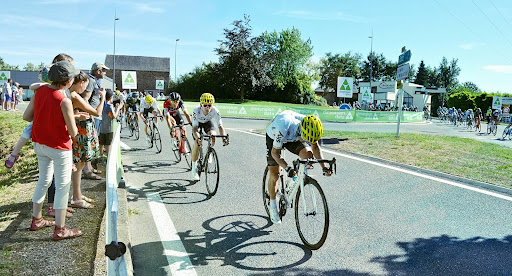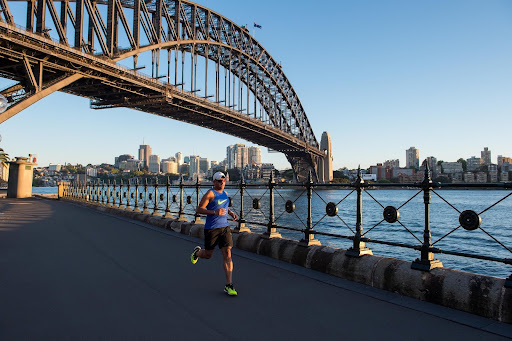Triathlons have witnessed a remarkable surge in popularity over the past few decades, evolving from niche events to mainstream athletic competitions that attract participants of all ages and fitness levels. The allure of triathlons lies in their unique combination of three demanding disciplines—swimming, cycling, and running—challenging athletes to push their physical and mental boundaries. As more individuals seek diverse and comprehensive fitness experiences, the triathlon has emerged as the ultimate test of endurance, strength, and resilience.
Swim Training
Triathletes often recognize the swim leg as one of the most technically demanding and mentally challenging aspects of a triathlon. Mastery of proper swimming technique is not merely advantageous but can be the key to a successful race start. Triathlon training books dedicated to swim training delve into the nuances of form, stroke mechanics, and efficiency in the water.
1. Importance of Proper Technique
The significance of a sound swimming technique cannot be overstated. Efficient and effective strokes not only conserve energy but also contribute to overall speed and confidence in the water. Books that emphasize the intricacies of proper swim technique serve as invaluable resources for triathletes seeking to refine their skills.
2. Endurance and Speed Drills
Swim training extends beyond mastering technique; it involves building endurance and speed. Triathlon training books often incorporate a variety of drills and workouts designed to enhance both aspects. These drills not only target specific muscle groups but also simulate race conditions, ensuring that athletes are well-prepared for the dynamic challenges of the swim leg.
3. Recommended Swim Training Books
For those venturing into the vast pool of swim training literature, several books stand out as authoritative guides. “Total Immersion: The Revolutionary Way To Swim Better, Faster, and Easier” by Terry Laughlin is renowned for its focus on efficient swimming, providing insights that resonate with both beginners and experienced swimmers. “Swim Smooth: The Complete Coaching System for Swimmers and Triathletes” by Paul Newsome and Adam Young offers a comprehensive approach to swim training, blending technique improvement with personalized coaching strategies.
These recommended swim training books go beyond the basics, offering a holistic understanding of swim training that caters to the specific needs and challenges triathletes face in the water. As athletes progress in their swim training journey, these resources serve as reliable companions, guiding them through the intricacies of technique refinement, endurance building, and speed development. In the ever-evolving landscape of triathlon training, a solid foundation in swim training sets the stage for success in the overall race.

Bike Training
The cycling leg of a triathlon demands a unique combination of strength, endurance, and strategic pacing. Effective bike training not only enhances an athlete’s overall performance but also contributes significantly to the overall enjoyment of the race. Triathlon training books focusing on bike training offer a wealth of knowledge on building strength, refining technique, and optimizing performance through strategic training methods.
1.Building Strength and Endurance
Building strength and endurance is at the core of effective bike training. Triathletes must navigate varying terrains and distances during the cycling leg, making it essential to develop the muscular endurance required for sustained efforts. Books dedicated to bike training often provide detailed insights into strength-building exercises, hill training, and long-distance cycling strategies.
2.Interval Training for Improved Performance
Interval training stands out as a key component in the arsenal of a successful triathlete. Books on bike training often emphasize the benefits of interval workouts, which involve alternating between periods of high-intensity efforts and recovery. This approach not only enhances cardiovascular fitness but also improves power and speed, critical factors in achieving peak performance during the cycling leg.
3.Notable Bike Training Literature
Several notable books have made significant contributions to the realm of bike training for triathletes. “The Cyclist’s Training Bible” by Joe Friel is a comprehensive guide that covers various aspects of cycling training, including periodization, intensity, and endurance. “Training and Racing with a Power Meter” by Hunter Allen and Andrew Coggan is revered for its focus on power-based training, offering a data-driven approach to optimize cycling performance.
These books serve as trusted companions for triathletes seeking to elevate their bike training. By delving into the principles of strength development, interval training, and performance optimization, these resources empower athletes to tailor their bike training to their unique strengths and goals. As the cycling leg often represents a substantial portion of a triathlon, the insights gained from these books are instrumental in achieving a well-rounded and successful race experience.
Run Training
The run leg of a triathlon is the concluding test of an athlete’s endurance and mental fortitude. Effective run training is not just about covering the distance but doing so with precision, maintaining stamina, and preventing injuries. Triathlon training books dedicated to run training address these crucial aspects, providing insights into developing running stamina, injury prevention techniques, and recommendations for must-read literature tailored to the specific needs of triathletes.
Developing Running Stamina
Building and maintaining running stamina is a fundamental aspect of successful run training. Triathlon training books often outline progressive training plans that focus on increasing mileage gradually, incorporating speed workouts, and addressing the unique challenges of transitioning from the bike to the run. These resources guide triathletes in honing their pacing strategies, optimizing energy conservation, and developing the mental resilience required to tackle the run leg effectively.
Techniques to Prevent Injuries
Injuries can be a significant setback for triathletes, particularly during the demanding run leg. Run training literature emphasizes the importance of proper form, warm-up routines, and targeted strength exercises to prevent common injuries. Books often delve into biomechanics, foot strike patterns, and shoe selection, offering a holistic approach to injury prevention that enhances both performance and longevity in the sport.
Must-Read Running-Focused Triathlon Books
For triathletes seeking authoritative guidance on run training, certain books stand out as must-reads. “Born to Run” by Christopher McDougall explores the transformative power of running and serves as a source of inspiration for athletes looking to connect with the primal joy of the sport. “Daniels’ Running Formula” by Jack Daniels is a comprehensive guide that caters to runners of all levels, providing insights into training principles, pacing strategies, and race preparation.
These running-focused triathlon books go beyond the conventional, offering a blend of practical advice, motivational anecdotes, and scientific principles to empower triathletes in their run training journey. As the run leg represents the final chapter in the triathlon, these resources play a pivotal role in ensuring athletes finish strong, achieving their best possible performance while mitigating the risk of injuries.

Importance of Proper Nutrition in Triathlon Training
The significance of proper nutrition in triathlon training cannot be overstated; it serves as the cornerstone of an athlete’s ability to perform optimally across the swim, bike, and run disciplines. Triathletes subject their bodies to intense physical exertion, making sound nutritional practices essential for fueling workouts, promoting recovery, and sustaining energy levels throughout the entire race. This section explores the critical role of nutrition in triathlon training and how adherence to proper dietary principles can significantly impact performance and overall well-being.
Nutrition in triathlon training is a multifaceted concept that encompasses pre-training fueling, on-the-go nutrition during workouts, and post-training recovery strategies. Understanding the specific nutritional demands of each discipline is crucial for triathletes seeking to maximize their potential.
1.Pre-training Fueling
Triathletes engaging in rigorous training sessions require proper fueling before each discipline. The right balance of carbohydrates, proteins, and fats ensures that athletes have the energy needed to tackle the challenges of swimming, cycling, and running. Triathlon training books often provide guidance on pre-training meals and snacks, emphasizing the importance of timing and nutrient composition to optimize performance.
2.On-the-Go Nutrition During Workouts
Sustaining energy levels during a triathlon is a dynamic process that requires careful attention to nutrition during the race. Books on triathlon nutrition guide athletes on the selection of energy gels, hydration strategies, and electrolyte replenishment to prevent fatigue and dehydration. Understanding the unique demands of each leg and tailoring nutritional intake accordingly is a key aspect of successful triathlon racing.
3.Post-training Recovery Strategies
Recovery is an integral part of any training regimen, and the post-training period is crucial for replenishing glycogen stores, repairing muscle tissue, and preparing the body for subsequent workouts. Triathlon training books delve into post-training nutrition, highlighting the importance of protein for muscle repair, carbohydrates for glycogen replenishment, and hydration for overall recovery.

Understanding the Psychological Aspects of Triathlon
Triathlon, beyond being a test of physical prowess, is a profound mental challenge. The psychological aspects of the sport play a pivotal role in an athlete’s ability to overcome obstacles, endure discomfort, and sustain focus throughout the swim, bike, and run disciplines. This section delves into the nuanced realm of mental conditioning for triathletes, exploring the psychological challenges inherent in the sport and how a robust mental approach contributes to success.
1.The Mental Challenge of Endurance Sports
Endurance sports, by their nature, demand mental resilience. Triathletes confront fatigue, discomfort, and the psychological weight of a grueling race. Understanding the mental challenges unique to each leg—managing anxiety in the swim, maintaining discipline on the bike, and summoning the willpower to finish strong on the run—is crucial for mental preparedness.
2.Strategies for Mental Toughness
Triathlon training books focusing on mental conditioning offer strategies for developing mental toughness. Visualization techniques, positive self-talk, and mindfulness practices are explored as tools to manage stress and enhance focus during training and competition. These resources emphasize the cultivation of a resilient mindset that enables triathletes to navigate the inevitable highs and lows of the sport.
3.Recommended Books on Mental Conditioning for Triathletes
Several books specifically address the psychological dimensions of triathlon, providing insights and practical strategies for mental conditioning. “The Brave Athlete: Calm the F*ck Down and Rise to the Occasion” by Simon Marshall and Lesley Paterson is a notable work that addresses common mental challenges athletes face, offering practical advice on overcoming self-doubt and building mental resilience. “How Bad Do You Want It?: Mastering the Psychology of Mind over Muscle” by Matt Fitzgerald explores the mental game of endurance sports, drawing on case studies and scientific research to illuminate the power of the mind in achieving athletic success.

Tailoring Training Plans to Individual Goals
In the dynamic world of triathlon training, one size does not fit all. Recognizing and respecting the unique strengths, weaknesses, and aspirations of each triathlete is fundamental to achieving success in the sport. This section explores the importance of personalized training plans, emphasizing the role of individualized approaches in optimizing performance and fostering long-term commitment.
1.The Significance of Individualized Training
Triathlon training is inherently diverse, encompassing three distinct disciplines with varying physical demands. A cookie-cutter training regimen might not address the specific needs of an individual athlete. Personalized training plans take into account factors such as fitness levels, time commitments, and the balance between work, family, and training. By tailoring training to individual goals, athletes can make efficient use of their time and resources, maximizing the impact of each workout.
2.Customizing Plans for Specific Disciplines
Given the unique challenges posed by each leg of a triathlon, personalized training plans allow athletes to focus on their weaknesses while capitalizing on their strengths. For instance, a triathlete with a strong swimming background may require less emphasis on swim training and more attention to improving cycling or running performance. Books on personalized training often provide guidance on identifying and addressing individual needs across swim, bike, and run disciplines.
3.Adapting to Lifestyle and Schedule
Life outside of triathlon training is a crucial consideration. Balancing the demands of work, family, and personal commitments requires a training plan that adapts to the athlete’s lifestyle. Books that explore personalized training delve into strategies for time management, recovery, and stress reduction, ensuring that training remains sustainable and enjoyable over the long term.
4.Success Stories from Personalized Plans
Illustrating the effectiveness of personalized training plans, success stories from triathletes who have followed customized approaches can be inspirational. These narratives highlight the transformative power of tailoring training to individual goals, demonstrating that a thoughtful, personalized approach can lead to significant improvements in performance and overall well-being.

Overview of Technological Advancements in Triathlon Training
The landscape of triathlon training has undergone a transformative evolution with the integration of cutting-edge technology and specialized gear. In this section, we explore the role of technology in enhancing triathlon performance, providing an overview of the latest advancements that have revolutionized the training and racing experiences for athletes across the globe.
1.Wearable Technology and Performance Monitoring
Wearable technology has become a game-changer for triathletes, offering real-time insights into various aspects of performance. Advanced fitness trackers and smartwatches provide metrics such as heart rate, distance covered, and even swim metrics for more accurate performance monitoring. These devices empower athletes to analyze their training sessions, identify areas for improvement, and make data-driven adjustments to their routines.
2.Smart Training Apps and Platforms
The digital age has ushered in a plethora of smart training apps and platforms designed specifically for triathletes. These applications offer personalized training plans, track workouts, and facilitate remote coaching, allowing athletes to access expert guidance and adapt their training in real-time. With features like virtual racing and social connectivity, these apps foster a sense of community and motivation among triathletes.
3.Bike Technology and Aerodynamics
The cycling leg of a triathlon heavily relies on technology to enhance speed and efficiency. Advances in bike technology, including aerodynamic frames, carbon fiber components, and electronic shifting systems, contribute to improved performance. Triathletes can benefit from books that delve into the intricacies of bike selection, gear ratios, and the optimal use of technology to gain a competitive edge on the bike leg.
4.Gear for Optimal Performance
Triathlon-specific gear has evolved to cater to the unique needs of athletes competing in swim, bike, and run disciplines consecutively. From streamlined wetsuits designed for efficient swimming to triathlon cycling shoes that seamlessly transition from bike to run, specialized gear plays a pivotal role in minimizing time transitions and maximizing overall performance.
5.Recovery Technology
Beyond training and racing, recovery is a critical component of a triathlete’s regimen. Technological advancements in recovery tools, such as compression therapy devices and percussion massage guns, aid in reducing muscle soreness and expediting the recovery process. Books covering recovery technology guide triathletes in integrating these tools effectively into their post-training routines.
Conclusion
In the pursuit of triathlon success, a comprehensive and strategic approach that encompasses these crucial aspects is essential. As athletes embark on their training journeys, the wisdom imparted by literature becomes a guiding force, steering them toward a balanced, informed, and ultimately successful triathlon experience. Whether a novice or an experienced competitor, the commitment to continuous learning and improvement ensures that each triathlete not only crosses the finish line but does so with resilience, confidence, and a sense of accomplishment.
